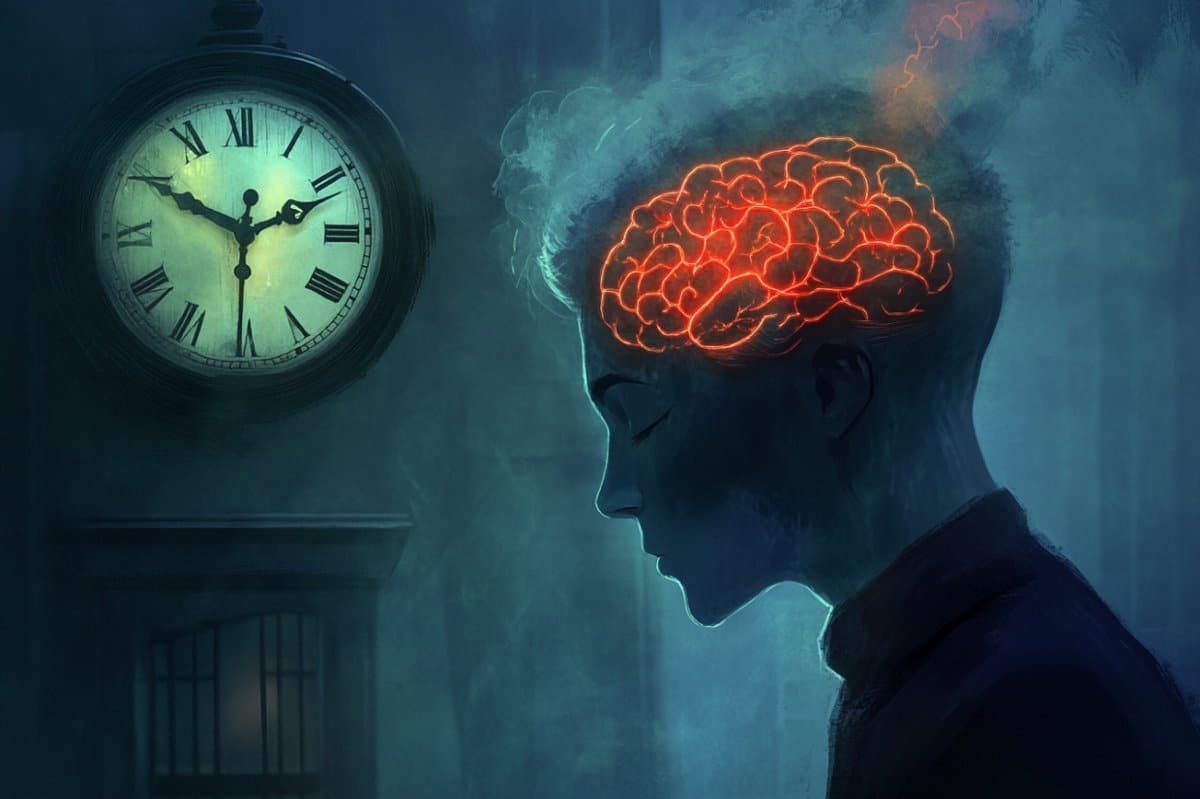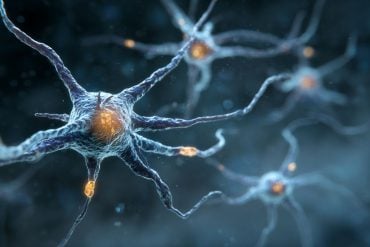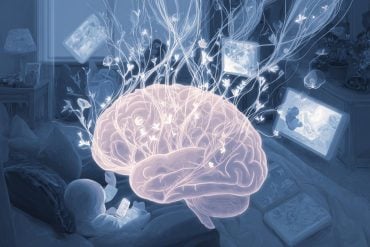Summary: Mind blanking—the experience of thinking about nothing—has often been misunderstood or lumped together with mind wandering. However, new research suggests it’s a distinct mental state linked to physiological arousal levels, with its own brain and body signatures.
Mind blanks are common during prolonged attention, sleep deprivation, or physical fatigue, and involve disruptions in memory, attention, and language. By studying neural patterns during blank moments, scientists hope to better understand both everyday cognitive lapses and clinical conditions like anxiety, ADHD, and brain injury.
Key Facts:
- Frequent Phenomenon: People experience mind blanking about 5–20% of the time.
- Physiological Clues: It’s associated with decreased heart rate, slower brainwaves, and local sleep states.
- Clinical Relevance: Mind blanking appears in anxiety, ADHD, brain injury, and sleep disorders.
Source: Cell Press
Mind blanking is a common experience with a wide variety of definitions ranging from feeling “drowsy” to “a complete absence of conscious awareness.”
In an opinion article publishing April 24 in the Cell Press journal Trends in Cognitive Sciences, a team of neuroscientists and philosophers compiles what we know about mind blanking, including insights from their own work observing people’s brain activity.
“During wakefulness, our thoughts transition between different contents. However, there are moments that are seemingly devoid of reportable content, referred to as mind blanking,” writes the research team, which formed as a result of collaboration at the 25th Annual Meeting of the Association for the Scientific Study of Consciousness in Amsterdam in 2022.
“It remains unclear what these blanks represent, highlighting the definitional and phenomenological ambiguities surrounding mind blanking.”
In the past, mind blanking has only been studied using research and experiments developed to study mind wandering—a similar internal experience in which our thoughts “flow seamlessly like a stream.”
The researchers argue that mind blanking is a distinct experience that involves feeling sleepier, more sluggish, and making more errors, and should be inspired by mind wandering research, but considered independently.
“We sought to better understand mind blanking by parsing through 80 relevant research articles—including some of our own in which we recorded participants’ brain activity when they were reporting that they were ‘thinking of nothing,’” explains author Athena Demertzi of GIGA Research at University of Liège, Belgium.
Takeaways from their research include:
- Mind blank frequency varies greatly between different people, but a person experiences the phenomenon about 5%–20% of the time on average.
- Common experiences defined as “mind blanking” include lapses of attention, memory issues, and a cessation of inner speech, among others.
- Mind blanks tend to happen toward the end of long, sustained attention tasks like exams and after sleep deprivation or intense physical exercise, but are also a typical waking state.
- Children with attention deficit hyperactivity disorder (ADHD) report mind blanking more frequently than neurotypical people.
- Mind blanking is part of the clinical description of generalized anxiety disorder in the Diagnostic and Statistical Manual of Mental Disorders (DSM-5). It is also relevant to several other clinical conditions including strokes, seizures, traumatic brain injuries, and Kleine–Levin syndrome—which causes people to sleep up to 20 hours per day.
- Experiments observing brain activity during rest using technologies including fMRI and electroencephalography show that there are specific neural signatures in the frontal, temporal, and visual networks of the brain before a mind blank.
- During mind blanks after sustained attention tasks, people’s heart rates and pupil sizes decreased and their brains showed lower signal complexity—a state typically observed in unconscious people. During the blank, they observed disruptions in sensory processing and slow, sleep-like EEG waves. The authors describe these states in which parts of a person’s brain appear asleep as “local sleep episodes.”
- An increase in neural activity in posterior cortical brain regions can also lead to mind blanking, as is the case when high-speed thinking leads to slower cognitive function.
- When people were prompted to actively “empty their minds,” researchers observed deactivations in the inferior frontal gyrus, Broca’s area, supplementary motor cortex, and hippocampus.
The researchers speculate that the common factor between different forms of blanking may be related to changes in arousal levels, leading to a malfunction of key cognitive mechanisms such as memory, language, or attention.
Given that blanking experiences vary so greatly—both in terms of people’s subjective experiences and their neural activity—the researchers propose a framework that describes mind blanking as a dynamic group of physiologically driven experiences mediated by arousal states, or a person’s state of physiological “vigilance.”
As they describe it, this means that when the brain is in a high- or low-arousal state, a mind blank is more likely to occur.
“The experience of a ‘blank mind’ is as intimate and direct as that of bearing thoughts,” says author Jennifer Windt of Monash University in Australia.
“Our aim here is to start a conversation and see how mind blanking relates to other seemingly similar experiences, such as meditation,” adds author Antoine Lutz of the Lyon Neuroscience Research Center in France.
The team hopes that acknowledging mind blanking as a distinct mental state in future research will help build toward a deeper understanding of mind blanking.
“We believe that the investigation of mind blanking is insightful, important, and timely,” says lead author Thomas Andrillon of the University of Liège.
“Insightful because it challenges the common conception that wakefulness involves a constant stream of thoughts.
“Important because mind blanking highlights the interindividual differences in subjective experience. Collectively, we stress that ongoing experiences come in shades with varying degrees of awareness and richness of content.”
Funding:
This work was supported by funding from the European Research Council, the French Research Agency, the Belgian Fund for Scientific Research, the EU Horizon 2020 Research and Innovation Marie Skłodowska-Curie RISE program, the European Cooperation in Science and Technology COST Action, the Léon Fredericq Foundation, and the University of Liège.
About this mind blanking and neuroscience research news
Author: Julia Grimmett
Source: Cell Press
Contact: Julia Grimmett – Cell Press
Image: The image is credited to Neuroscience News
Original Research: Open access.
“Where is my mind? A neurocognitive investigation of mind blanking” by Athena Demertzi et al. Trends in Cognitive Sciences
Abstract
Where is my mind? A neurocognitive investigation of mind blanking
During wakefulness, our thoughts transition between different contents.
However, there are moments that are seemingly devoid of reportable content, referred to as mind blanking (MB).
It remains unclear what these blanks represent, highlighting the definitional and phenomenological ambiguities surrounding MB.
We map out MB in terms of its reportable expressions, neurophysiology, and relationship to adjacent phenomenology, including meditative practices and sleep.
We propose a mechanistic account linking MB to changes at the physiological, neural, and cognitive levels.
We suggest that ongoing experiences are characterized by degrees of richness, and that contentless events represent distinct mental states with their own diversity.
We encourage future research to acknowledge MB as a reportable mental category, leading to a comprehensive understanding of ongoing experience.








